TL;DR: A simple experiment to test the lightfastness of fountain-pen inks. This is important for anyone drawing or writing things they’d like to showcase, possibly in a frame, yet still read after many months and years. I put many inks on paper in duplicate, put a copy in a drawer, and taped another on the window. I take snapshots about every weekend and check to see which ink has faded beyond recognition — I know those are not lightfast and when they become less than legible. This mini-report summarizes the first three months of operation.
Sample index:
- Nov 26, 2021 – First entry.
- Jan 16, 2022 – Entry selected for January.
- Feb 6, 2022 – Entry selected for February.
The beginning: Nov 26, 2021. A Friday, apparently.
I thought about this experiment in the following way: Ink (and paper) get degraded under the influence of direct sunlight. It’s not a matter of if, but of when. Lightfastness does not indicate an ink will stay forever readable without repair, but that the period while the ink stays legible is long, years or decades maybe. Although I do not intend to continue this experiment for decades, I do want to measure for at least a year and possibly for longer.
The setup consists of two written pages, all on Rhodia 80-gsm paper from a dotbook or dotpad, of which one copy goes to a dark place without direct sunlight exposure (e.g., a drawer) and the other goes into direct sunlight. The drawer copy is the initial sample, against it we will compare the ink affected by sunlight. True direct sunlight is only possible when the page can stay outside, free of any obstruction, but this is simply impossible with the weather here, in the Netherlands. So a feasible option is to tape the paper with ink on it on a window.
Measurements mean taking a photo of the current status of the page taped to the window, against the light. The quality of light varies over the day, which is why I’d like to try to measure always at the same time. However, this should not be a hard requirement, because light also varies seasonally at this latitude.
Results mean comparing the photo against the digital copy of the initial sample and, very rarely so that I do not spoil too much the initial sample, against the physical copy of the initial sample.
Limitation #1 to this experiment: I do not want to make this experiment a burden, so I will try to measure roughly periodically — every Sunday, at about 1000. However, I will occasionally measure on a different day, at a different time, or just skip altogether. However, it’s the duration of the experiment that matters the most, because we want to test lightfastness over long periods of time.
Limitation #2 to this experiment: The photos I take cannot be easily compared. They typically have to go through a photo-editing application, which changes the properties of the original photo. However, the most important thing to observe is the relative differences of how inks appear on the same page, because I hypothesize some inks will stay lightfast for much longer than others and also their legible status will not degrade for a long period of time. (This hypothesis is based on available information from manufacturers, which at least state the ink is considered permanent, e.g., for the Platinum Carbon Black, see for example Page 2/Figure 1b.)
OK, now on to the experiment results, the first shot:
First up, the drawer material (Figures 1a-1c). Too many inks…


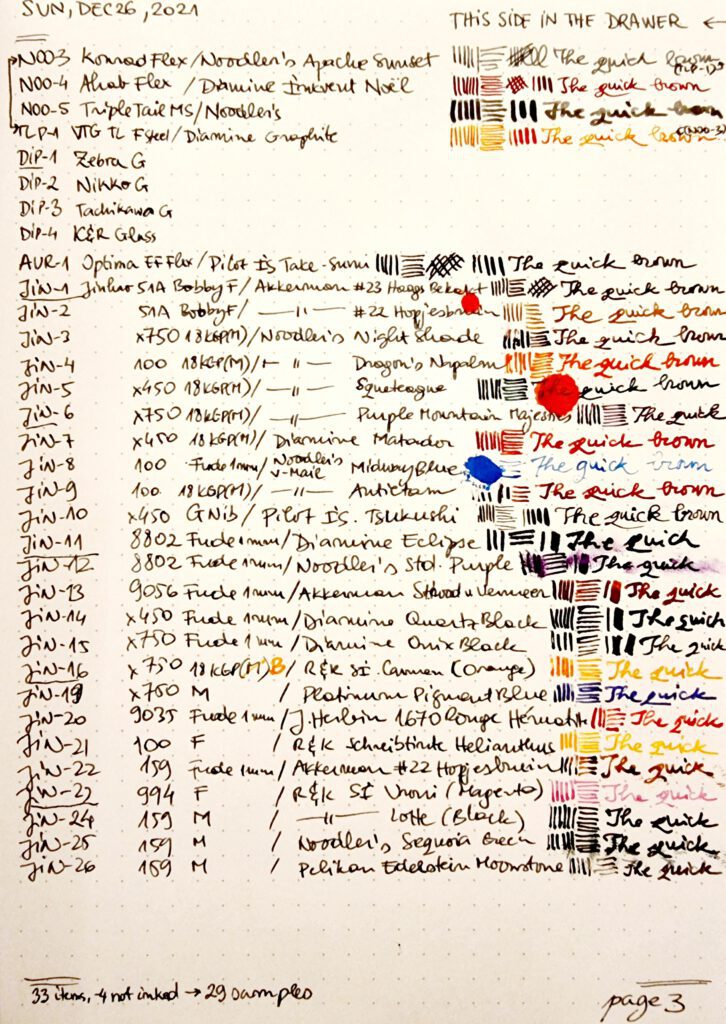
Then, the window material, which will get exposed to the sun (Figures 1d-1f).
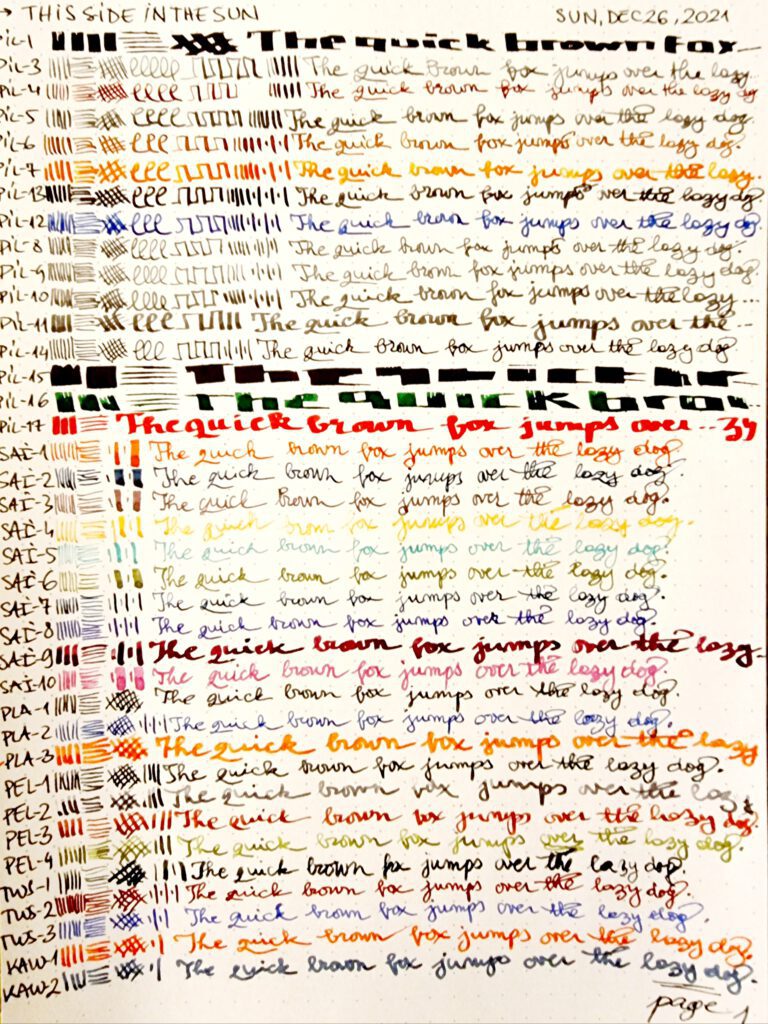
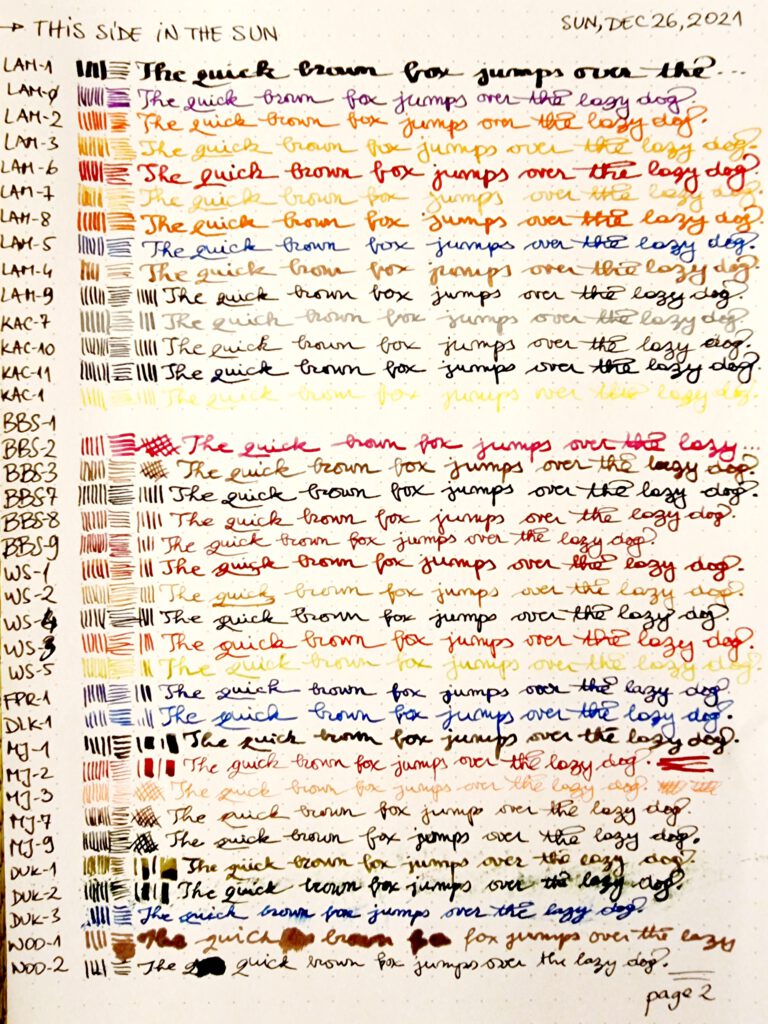
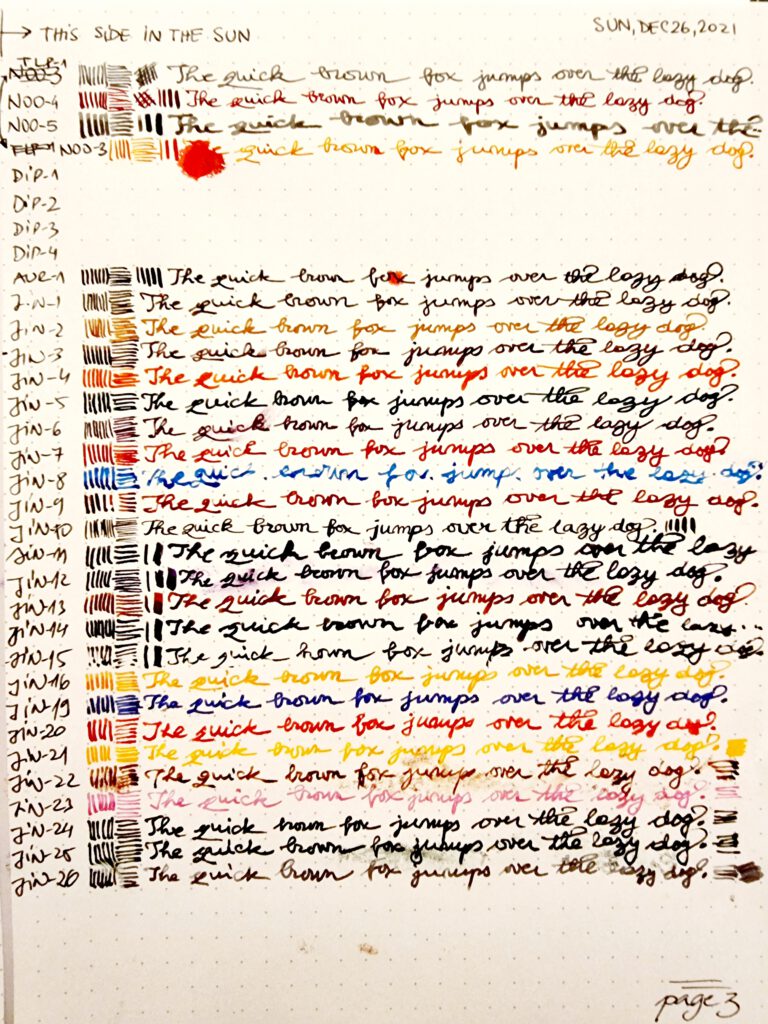
Sample in Jan 2021 (Figures 2a-2c): no fading to write home about.
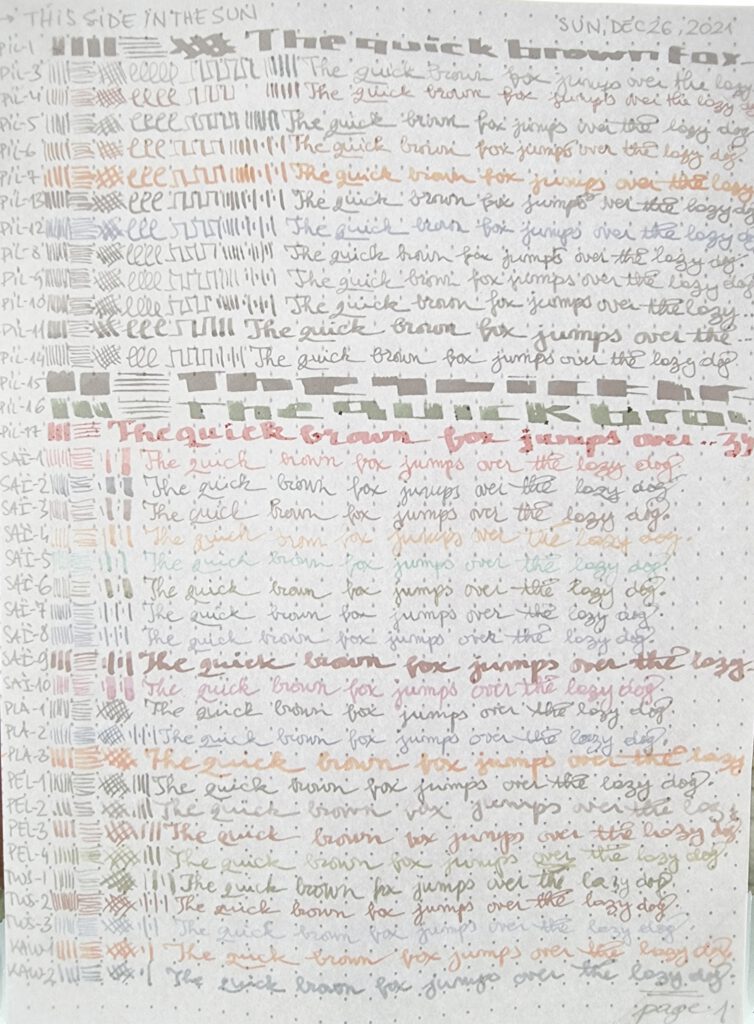
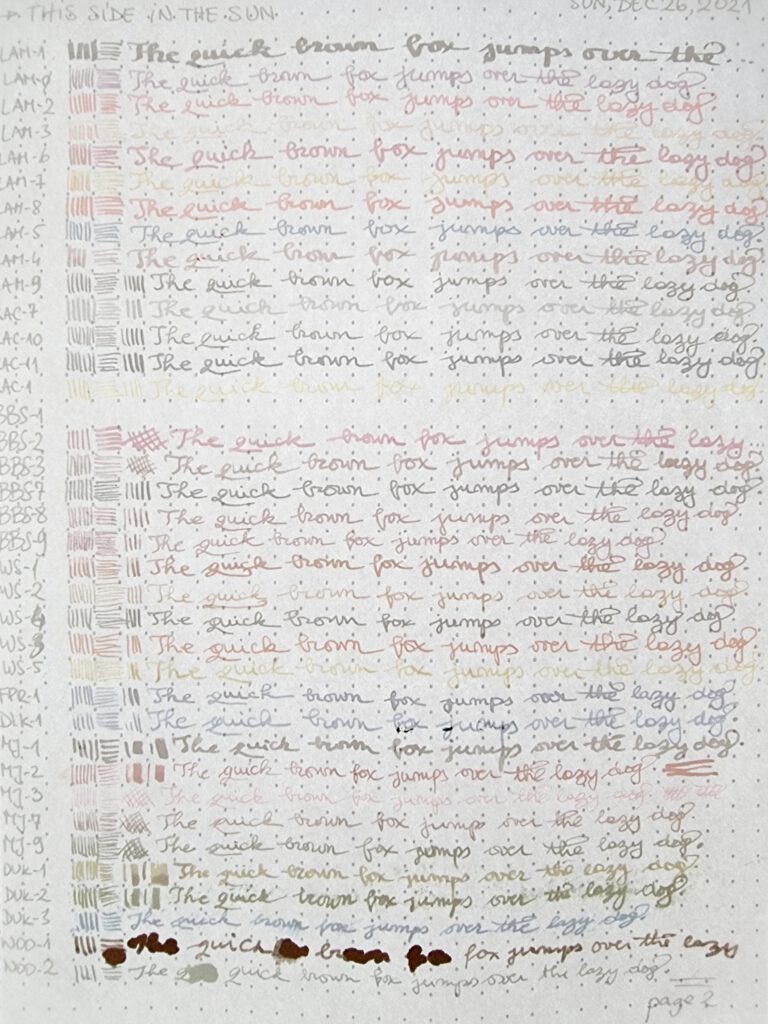
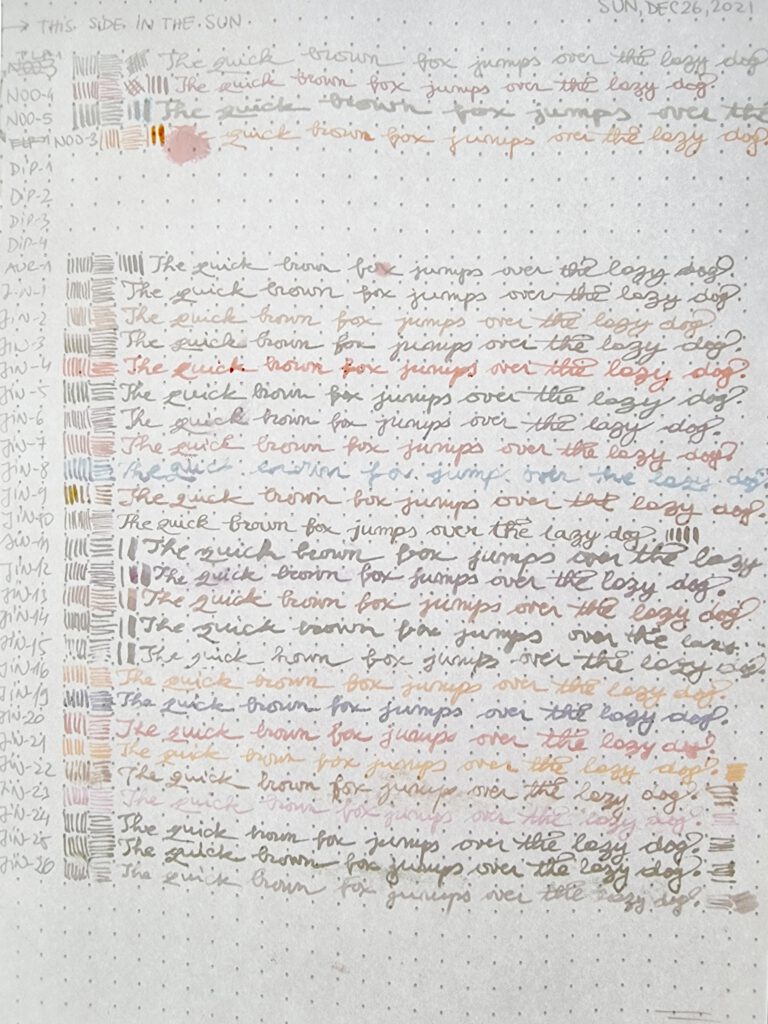
Sample in Feb 2021 (Figures 3a-3c): no fading to write home about. Whatever degradation has occurred already, it is not something that I can notice. This is a bit surprising to me, because I thought these inks will fade very fast, surely in a matter of several months. I was wrong.
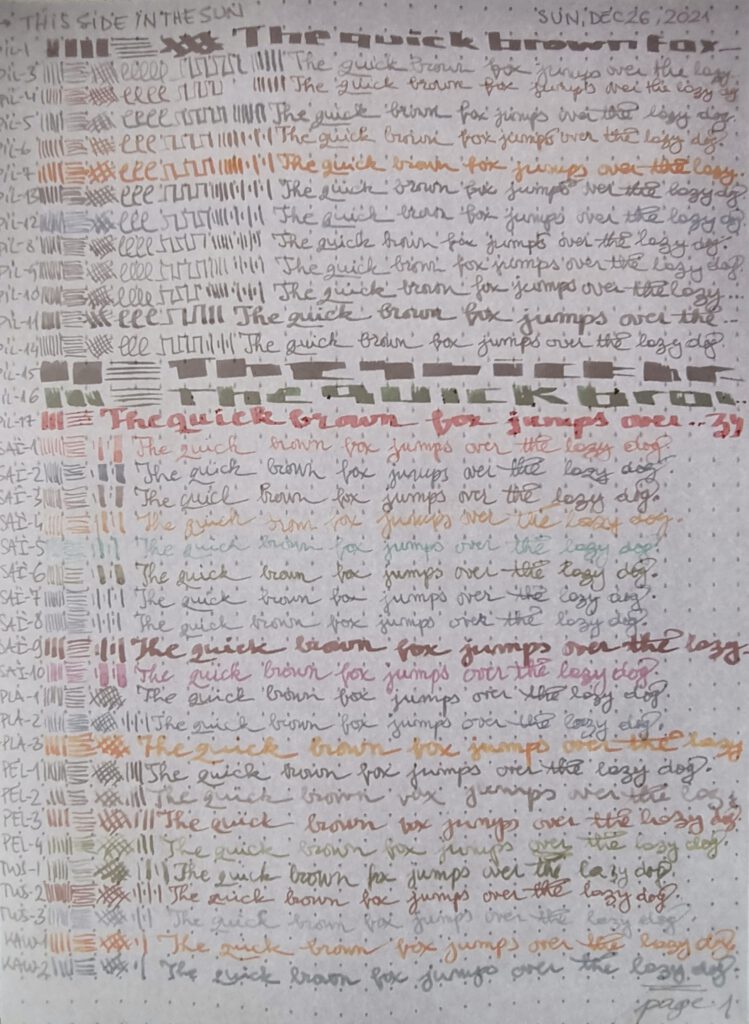

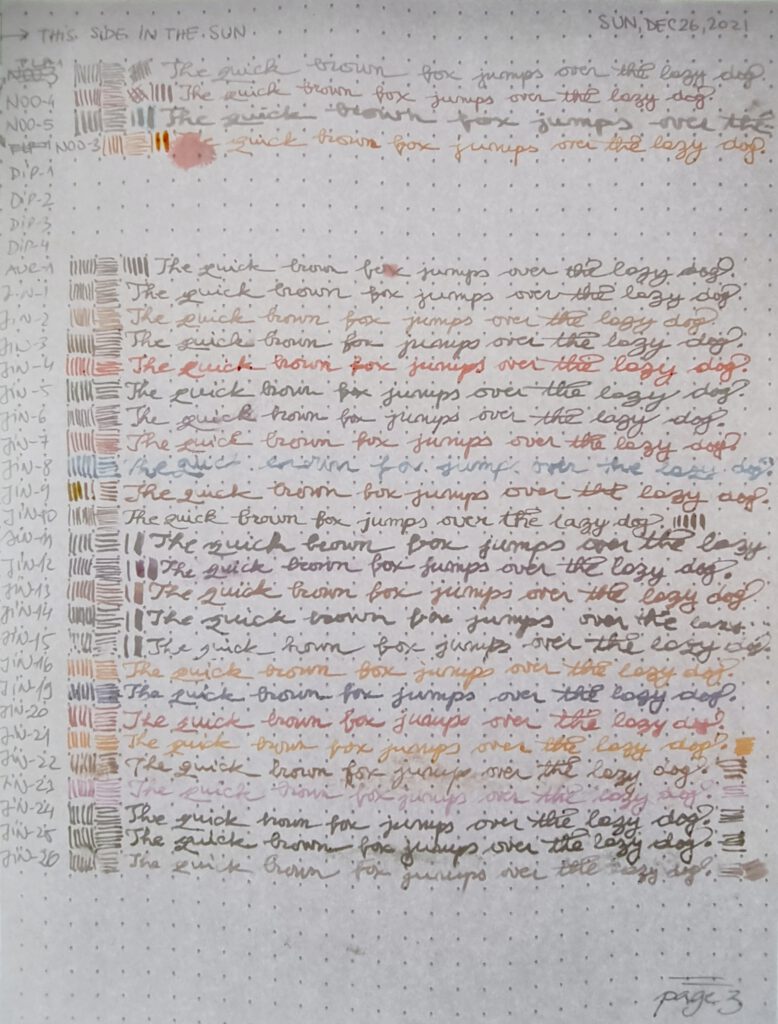
Conclusion:
Ink lightfastness is an important subject for anyone serious about preserving their drawing and writing work. In this mini-report, I explored a setup for measuring ink lightfastness, experimentally, by photographing a page taped on the window against the light, and comparing the results with the original.
This mini-report covers the first three months of this experiment. The results are surprising to me — no noticeable degradation, at least not to a level I would care.
Enjoy the day!

